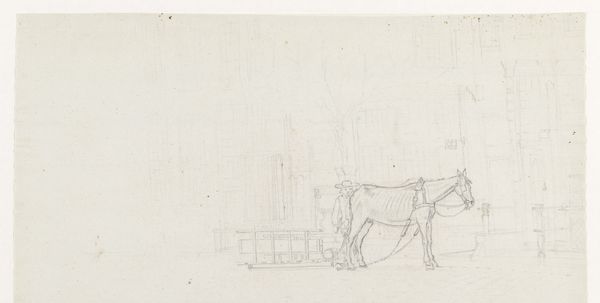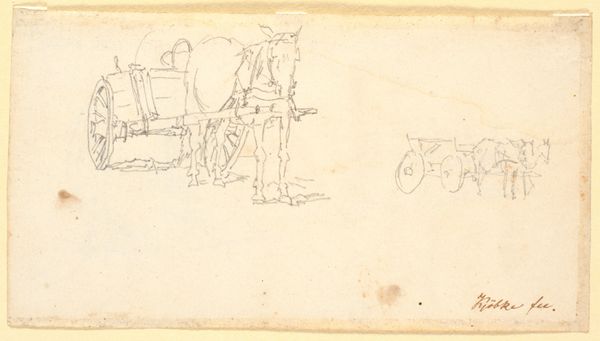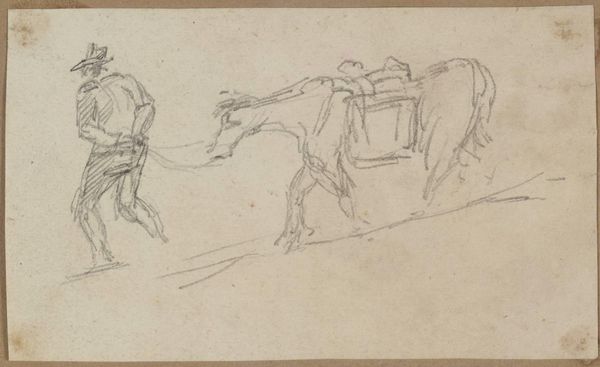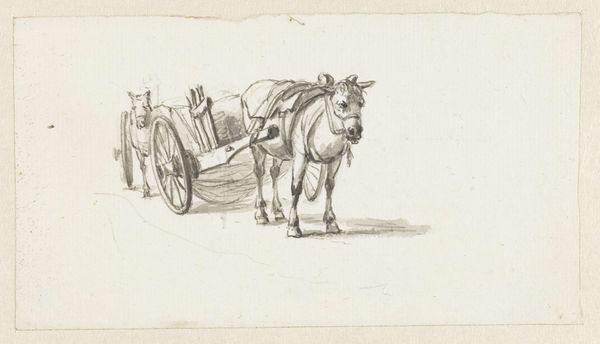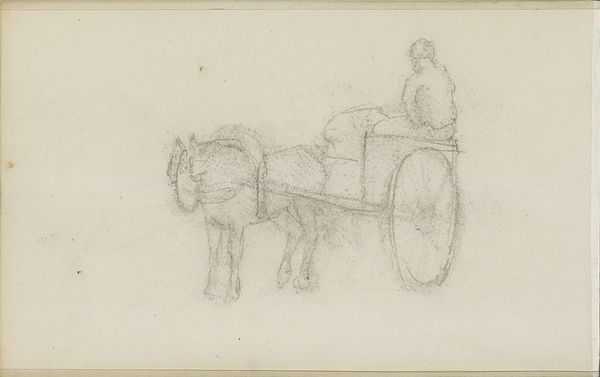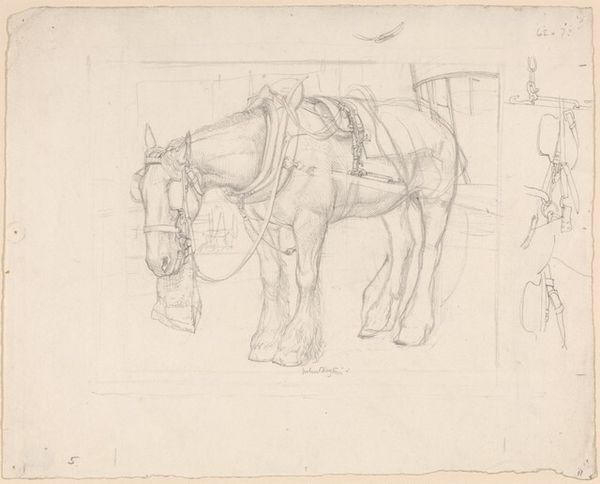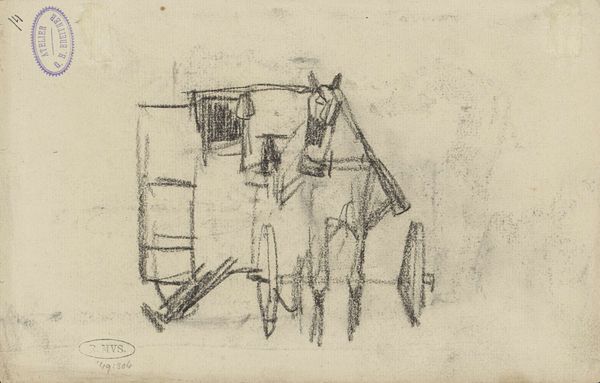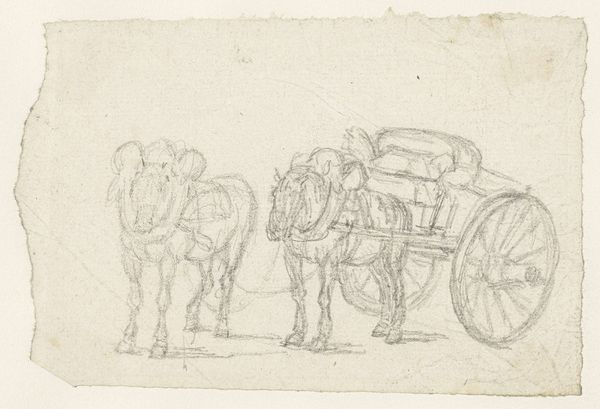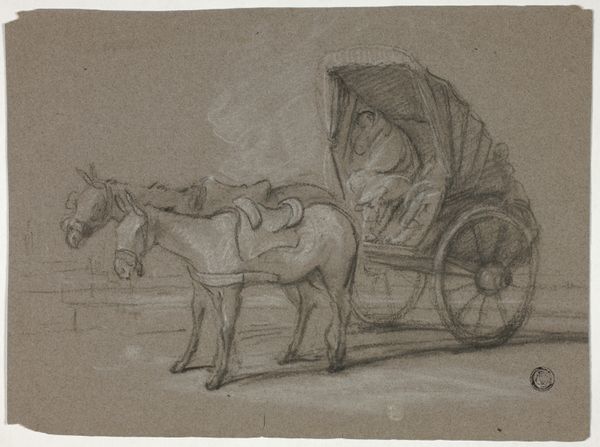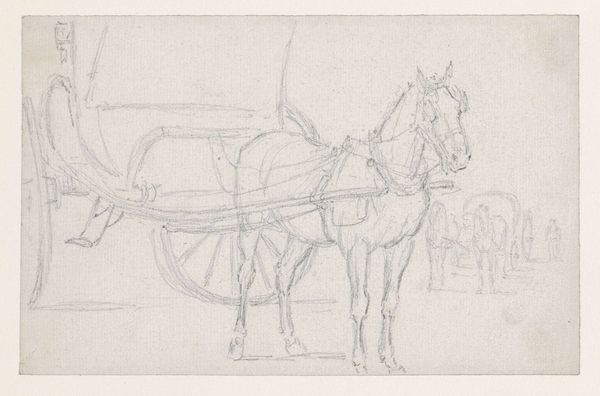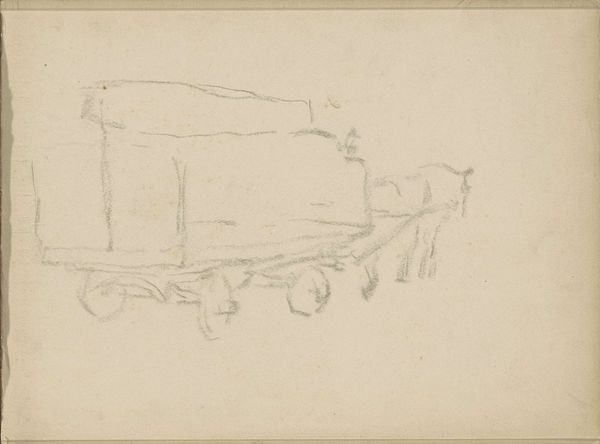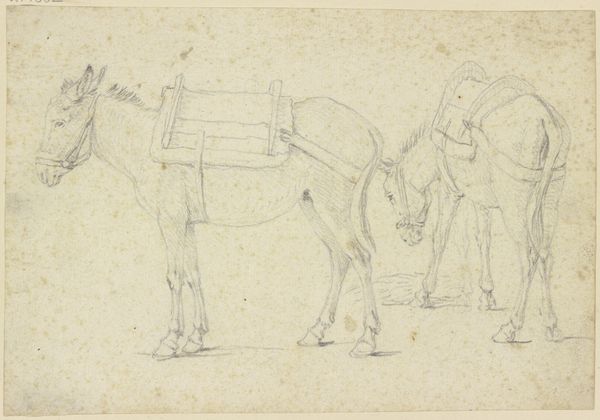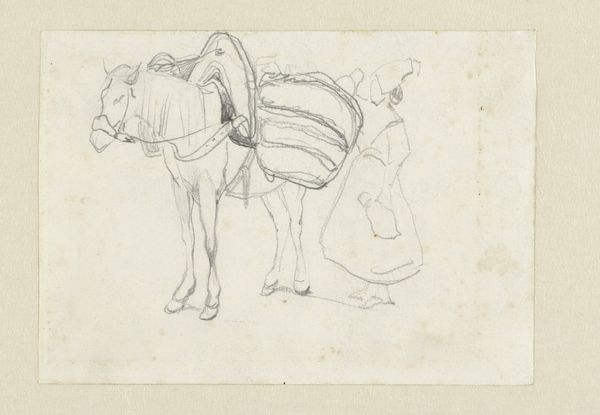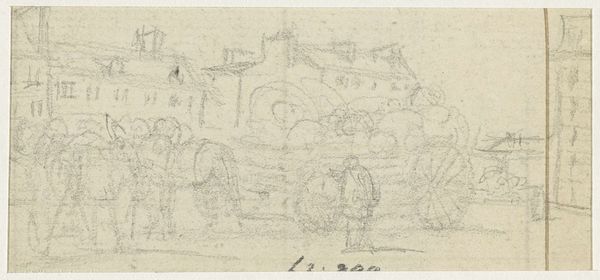
drawing, pencil
#
drawing
#
landscape
#
figuration
#
romanticism
#
pencil
#
realism
Dimensions: height 96 mm, width 160 mm
Copyright: Rijks Museum: Open Domain
Curator: This is a pencil drawing entitled "Koetsje met één paard van voren gezien," which translates to "Small Carriage with One Horse Seen from the Front." The artwork, rendered on paper by Georges Michel, is estimated to have been created sometime between 1773 and 1843. Editor: It strikes me as quite… tentative. A preliminary sketch, perhaps. The lines are faint, almost ghostlike, lending a delicate, fleeting quality to the depicted subject. Curator: The artist’s choice of medium, a simple pencil, certainly reinforces that impression. The simplicity belies a carefully considered composition. Notice the repetition of form; the carriage is depicted both in a larger scale in the foreground, but then mirrored, ever so lightly, by a similar carriage behind it. It gives the effect of depth on the page, wouldn't you say? Editor: Indeed. But consider the cultural context of this subject. During this period, the carriage was a powerful symbol of status and luxury, reflecting societal divisions. I would even argue its depiction signifies class disparity during a time of social and political unrest. What we must consider is how that informed the way the sketch has come together. Curator: But I am compelled by the way Michel is manipulating light through the varying degrees of pencil pressure. Note how he employs the faintest lines to evoke atmospheric perspective, creating space and form, particularly around the carriage in the background. Editor: Michel clearly intended this not just as a representation of conveyance, but perhaps as a visual commentary on its significance in late 18th-century, early 19th-century society, with social and cultural ramifications that extend beyond pure aesthetics. Curator: Regardless, this preliminary study demonstrates Michel's grasp of form and space and is ultimately intriguing due to its unassuming presentation and sophisticated interplay between lines. Editor: Perhaps, after our dialogue, we might more greatly understand its relationship to society and social hierarchy within that context.
Comments
No comments
Be the first to comment and join the conversation on the ultimate creative platform.
